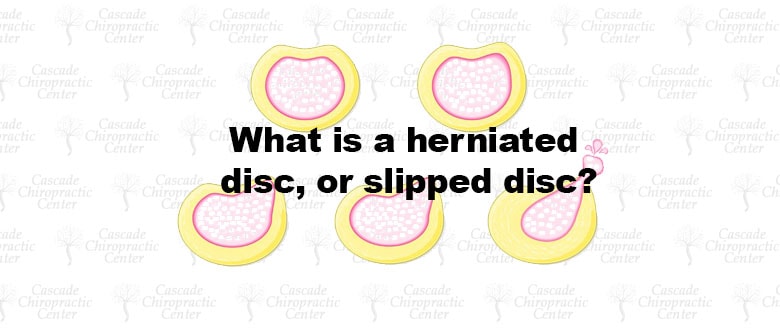What is a herniated disc, or slipped disc?
Spinal discs are the cushions or “shock absorbers” between the spinal bones or vertebrae which if damaged can cause a herniated disc. The discs also allow for motion in the spine. The disc is made of a tough outer border and a softer gelatinous center kind of like a jelly donut. When the tough outer border becomes torn or cracked some of the softer center called the nucleus can be pushed out causing a bulge or herniation. This is what is typically referred to as a herniated disc. Other terms that are sometimes used include a pinched nerve in the neck or back, a trapped nerve or a disc rupture to spinal decompression.
Symptoms of a herniated disc
The symptoms associated with a herniated disc depend on what direction the disc herniates and what other tissue the herniated disc places pressure on. In some cases a herniated disc will create little or no pain at all. The various symptoms of a herniated disc depend on which pain sensitive tissue the disc puts pressure on and include the symptoms listed below:
- Sciatica – Leg pain or tingling
- Arm pain or tingling
- Numbness
- Muscle spasm
- Muscle weakness
- Neck pain
- Back pain
- Shoulder pain
The pain associated with a disc herniation may be mild to severely debilitating. The pain can often make sleep and many other normal daily functions extremely difficult.
Treatment of herniated discs
The treatment options for a herniated disc include many of the same treatments utilized to achieve back pain relief. Chiropractic manipulation has been shown to be beneficial in many cases. A particular form of manipulation called spinal decompression or flexion distraction techniques are utilized with the goal of decompressing, or taking pressure off, of the nerve that is creating much of the pain or other symptoms. Other treatments that may be utilized include various forms of exercise and stretching, steroid medication taken orally or injected to decrease inflammation around the nerve and surgery. Contact us for more information!

